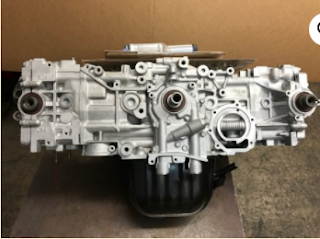TO BUY OR NOT TO BUY?
That is the question that every
potential customer asks himself/herself whilst standing in a showroom full of
Japanese cars. These cars are compact, stylish and relatively expensive
compared to most of the other cars. But is this all there is to these miniature
beasts?
Packed with an engine of incredible
horsepower, a Japanese car proves its efficiency even after considerable years
of use. This is possible due to the frequent and rigorous inspection of cars in
Japan. Moreover, since people in Japan change cars after very short periods of
time, there is an extensive market of automobile machinery including low mileage Japanese engines.
These engines are much sought after and are available
in great variety. The three most prominent Japanese enterprises: Sony,
Panasonic and Toyota are included in the immense car machinery available at
incredible resale value. This market allows people to purchase almost brand-new
machinery at relatively affordable prices.
A Japanese engine of a low mileage
can work as efficiently as a brand-new engine because of the incessant
pre-purchase testing. The testing ensures a quality purchase to the consumers.
This quality purchase would be defined as high reliability, high resale price,
durability and aesthetic appeal. In short, customers are guaranteed the full
package upon buying a Japanese automobile.
After receiving the aforementioned
information, the potential customer might be confused as to buy a new Japanese
car or a low mileage one. This confusion is quite natural; after all why do the
Japanese change their cars so frequently if these cars have such high
efficiency? Rather than the existence of flaws, it is due to the strict
regulatory laws concerning automobiles in Japan that eventually lead to resale
of old cars and the purchase of new ones.
These regulatory laws require
strenuous inspections of the automobiles annually which cost around
$1000-$2000. Furthermore, this cost multiplies as the car gets older.
Resultantly, changing a car proves to be more economical for the consumers than
maintaining an old one. This gives way to an enormous market of durable car
hardware at affordable rates.
Quite often, people complain of not being able to
find the right auto parts that would function properly with their cars.
However, the easy availability of auto parts of various Japanese companies and
models ensures the customers a comfortable, trouble-free experience that would
last longer than they would have expected.
This makes it evident that the old
Japanese automobiles are just as productive and actually provide more benefits
than the new cars. Not only are they cheaper, but they also promise better
results due to the countless examinations. The cars’ body is in excellent shape
as well, thus making it impossible for the potential customer to point out a
drawback.
With all of the details provided,
there is no room left for confusion for the customer. A new Japanese engine
promises change and innovation along with efficiency, while a low mileage
engine delivers efficiency and durability. Either choice guarantees favourable
results, the difference only being the affordability of the used automobiles.




Comments
Post a Comment